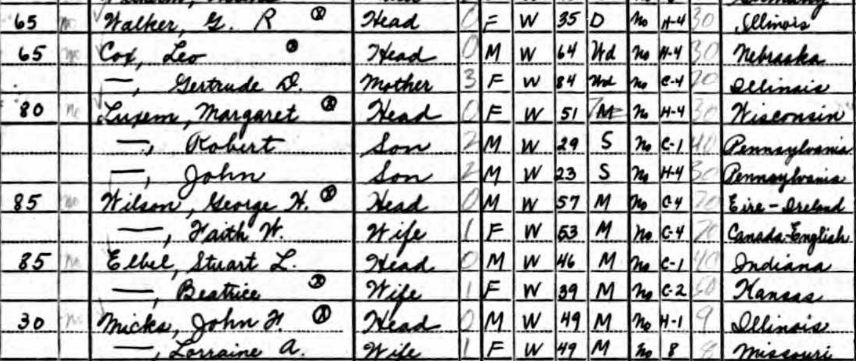Transport analyst and writer Tom Vanderbilt has a four-part series in Slate about the crisis in American walking:
The United States walks the least of any industrialized nation. ... Why do we walk so comparatively little? The first answer is one that applies virtually everywhere in the modern world: As with many forms of physical activity, walking has been engineered out of existence. With an eye toward the proverbial grandfather who regales us with tales of walking five miles to school in the snow, this makes instinctive sense. But how do we know how much people used to walk? There were no 18th-century pedometer studies.
[S]ince our uncommon commitment to the car is at least in part to blame for the new American inability to put one foot in front of the other, the transportation engineering profession’s historical disdain for the pedestrian is all that much more pernicious. In modern traffic engineering the word has become institutionalized, by engineers who shorten pedestrian to the somehow even more condescending “peds”; who for years have peppered their literature with phrases like “pedestrian impedance” (meaning people getting in the way of vehicle flow).
As Vanderbilt says, traffic engineers and our obsession with the car have driven most of the problems. Even though engineer Charles Mahron and people like him crusade against the worst urban designs (see, e.g., Brainerd, Minn.), I don't think anything will change without a disruptive and permanent external shift. I don't really want $10 gas, but wow would that focus people's attention on driving.
I found out, after too many failed download attempts for no reason I could ascertain (come on, Amazon), the 1940 Census data is also available on Ancestry.com. Their servers actually served the data correctly. And so, I found this:

The apartment numbers aren't listed, and the building added an apartment to my entrance sometime in the last 70 years, but I think I can work it out. The first column shows the rent for each apartment. The three higher-rent apartments have to be the larger ones to the west. That means mine is either one of the two $65 apartments on the table or was vacant on 1 April 1940.
So the best I can do is that the three apartments on my side of the stairs that existed in 1940 contained a 35-year-old divorcée from Illinois who worked as an office manager in a brokerage, and a 64-year-old broker/solicitor from Nebraska who lived with his 84-year-old mother. My neighbors included a 51-year-old mother who lived with her 29- and 23-year-old sons, both of whom worked as wholesale salesmen; the 57-year-old treasurer of a wholesale varnish company and his 53-year-old wife; the 46-year-old head of the complaints department at Illinois Bell and his 39-year-old wife; and the building engineer and his wife, both of whom were 49.
All of these people were white, professional, and at least high-school educated. Six of eleven had college educations, a significantly higher proportion than the general public at the time. There were no children in the tier. All but two were U.S.-born. (The varnish-company treasurer came from the Republic of Ireland; his wife was English-Canadian.) All but the divorcée had lived in the same apartment for at least 5 years. Seven of eleven worked at least 40 hours during the previous week, including the poor janitor who worked 70. Salaries ranged from $600 (the 29-year-old son who sold furniture wholesale) to $5000+ (the Irish varnish company treasurer). Mrs. G.R. Walker, the most likely candidate for my predecessor in this apartment, made $2000, somewhat higher than the U.S. average salary in 1940 and approximately eqivalent to $32,000 today.
Today we're entirely professional (including three attorneys and two professional musicians), with a handful of young children, all of us college-educated or better. There is one foreign-born person; our average age, not counting the children, is about 38; and none of us worked 70 hours last week. Two of the seven apartments are rentals, the rest are owned. Adjusting for inflation, they cost almost exactly the same as in 1940.
In other words, the people who lived in my apartment building 70 years ago looked a lot like the people who live here today. And I wish I could meet them.
The Census and the National Archives have released the entire 1940 enumeration quasi-digitally. I think the data drop is great. I am going to download a few specific documents based on what I know about my own family, and about some of the places I've lived that were around in April 1940.
But as a software developer who works mainly with Cloud-based, large-data apps, I am puzzled by some of the National Archives' choices.
I say "quasi-digitally" because the National Archives didn't enter all the tabulated data per se; instead they scanned all the documents and put them out as massive JPEG images. I'm now downloading the data for one census tract, and the 29 MB ZIP file is taking forever to finish. The actual data I'm looking would take maybe 1-2 kB. That said, I understand it's a massive undertaking. There are hundreds of thousands of pages; obviously entering all the data would cost too much.
But this goes to the deeper problem: The Archives knew or should have known that they'd get millions of page views and thousands of download requests. So I need to ask, why did they make the following boneheaded technical decisions?
- They used classic ASP, an obsolete technology I haven't even used since 2001. The current Microsoft offering, ASP.NET MVC 3, is to classic ASP what a Boeing 787 is to a DC-3. It's an illuminated manuscript in the era of steam-driven presses.
- They organized the data by state and city, which makes sense, until you get to something the size of Chicago. Northfield Township, where I grew up, takes up one map and about 125 individual documents. Chicago has over 100 maps, which you have to navigate from map #1 to the end, and a ridiculous number of individual documents. You can search for the census tract you want by cross streets, but you can't search for the part of the city map you want by any visible means.
- I'm still waiting for my 32-page document after 22 minutes. Clearly the Archives don't have the bandwidth to handle this problem. Is this a budget issue? Perhaps Microsoft or Google could help here by donating some capacity until the rush is over?
In any event, once I get my documents, I'm going to spend some time going over them. I really want to find out what kind of people lived in my current apartment 70 years ago.
Update: The first download failed at 1.9 MB. The second attempt is at 6.6...and slowing down...
Update: The second and third attempts failed as well. I have, however, discovered that they've at least put the data out on Amazon Web Services. So...why are the downloads pooping out?
Via reader MG, a beautiful visualization of the wind on a map. A static example, from Tuesday:

The Atlantic has noticed a trend among millenials: they aren't buying as many cars as we did.
The Times notes that less than half of potential drivers age 19 or younger had a license in 2008, down from nearly two-thirds in 1998. The fraction of 20-to-24-year-olds with a license has also dropped. And according to CNW research, adults between the ages of 21 and 34 buy just 27 percent of all new vehicles sold in America, a far cry from the peak of 38 percent in 1985.
The billion-dollar question for automakers is whether this shift is truly permanent, the result of a baked-in attitude shift among Millennials that will last well into adulthood, or the product of an economy that's been particularly brutal on the young.
[But]
Millennials are more likely than past generations to live in an urban community, and this may be part of what terrifies car markers. About 32 percent reside in cities, somewhat higher than the proportion of Generation X'ers or Baby Boomers who did when they were the same age, according to a 2009 Pew Research Center report. But as the Wall Street Journal reports, surveys have found that 88 percent want to live in an urban environment. When they're forced to settle down in a suburb, they prefer communities like Bethesda, Maryland, or Arlington, Virginia, which feature plenty of walking distance restaurants, retail, and public transportation to nearby Washington, DC.
Absent Parker, I don't know if I would own a car. With two ZipCar locations within 400 m of me, I'd hardly need one. My takeaway, however, is that we're becoming more urban, and that means less car-dependent. This is one American trend I particularly like.
Researchers at Amundsen-Scott South Pole Station have been watching the sun set for weeks. At the poles, the sun traces an excruciatingly slow corkscrew between equinoxes, first spiraling up to a point 23° above the horizon (only about as high as the sun gets in Chicago around 10am on December 21st) on the solstice, then slowly spiraling back down to the horizon over the next three months.
In about an hour from now, the last limb of the sun will slip below the south polar horizon, the twilight gradually fading for another three weeks. The sun won't appear again until September 20th.
Fourteen people will spend the next five months at Amundsen-Scott, with no possibility of leaving until the end of August.
The astrology nutters who sued the time zone database for copyright infringement have withdrawn the suit.
Plaintiff's attorney Julie Molloy filed the notice of voluntary dismissal today in the District of Massachusetts under Federal Rule of Civil Procedure 41(a)(1).
So, reason prevailed. Good.
Via Atlantic Cities, a description of Baarle-Nassau, which not only straddles the Belgian-Dutch border, it appears to have run into the border at great speed and splattered:
 [T]he Belgian town consists of 24 non-contiguous parcels of land. Twenty-one of them are surrounded by the Netherlands. while three are on the border between the two countries and thus share a jurisdictional boundary with the rest of Belgium, if also with the Netherlands and if not with each other.
[T]he Belgian town consists of 24 non-contiguous parcels of land. Twenty-one of them are surrounded by the Netherlands. while three are on the border between the two countries and thus share a jurisdictional boundary with the rest of Belgium, if also with the Netherlands and if not with each other.
And get this: there are Dutch enclaves within the Belgian enclaves that are within the Netherlands. And, actually, the main part of Baarle-Hertog is about five miles southwest of the portions you see here, and completely in Belgium.
...[B]uildings sitting within both countries pay taxes according to where their front doors are located. Some shops have apparently moved their doors "as a tax dodge of sorts." Indeed, there was a complicated legal case in which a bank engaged in money laundering had a front door in the Netherlands, but a vault in Belgium.
Road trip! And to Point Roberts, Wash., a little town attached to the underbelly of British Columbia.
I've wanted to hike the New York Highline since I first heard about it. I should go back when it's warmer, of course, but I still thought it pretty cool:

The Highline shows that an elevated urban park can work, both as public space and as a great way to preserve historical (or expensive-to-remove) infrastructure. I hope Chicago's Bloomingdale Trail follows the same model, once the city sees fit to authorize it. (The Bloomingdale Trail umbrella organization has comparison of the two projects, about half-way down.)
Reader Curtis Manwaring alerted me this morning to movement in the copyright infringement case against Arthur David Olson, late of the Posix time zone database. The Electronic Frontier Foundation has taken up Olson's (and Paul Eggerts') defense, and yesterday threatened a motion for Rule 11 sanctions against the plaintiff's attorney if they don't withdraw the case within 21 days:
If there were ever a pleading that invited Rule 11 sanctions, Plaintiff Astrolabe, Inc.'s Complaint is it. ... Astrolabe's frivolous and unfounded Complaint has already caused harm, and not only to Mr. Olson and Dr. Eggert. ... Perhaps realizing the folly of filing such a Complaint, Astrolabe has not yet served Defendants. Yet Astrolabe refuses to voluntarily dismiss its baseless Complaint, and thus the threat of full-blown copyright litigation looms, to the detriment of Defendants and the public interest in obtaining accurate time zone information on the Internet.
Astrolabe's Complaint illustrates the harm that frivolous claims of copyright infringement can cause to a public, collaboratively maintained factual resource. Under Rule 11, the Court should remedy this abuse of the legal system and deter future abuses by striking the Complaint and awarding defendants their costs and attorney fees.
I predicted this motion back in October. I can't wait to see how Astrolabe and their attorney respond.